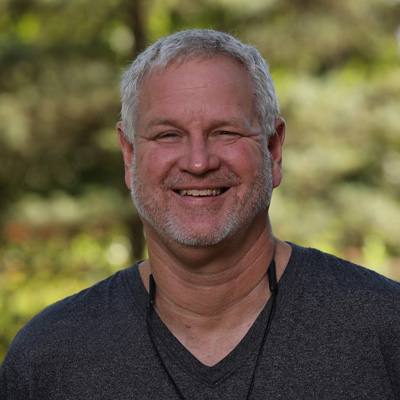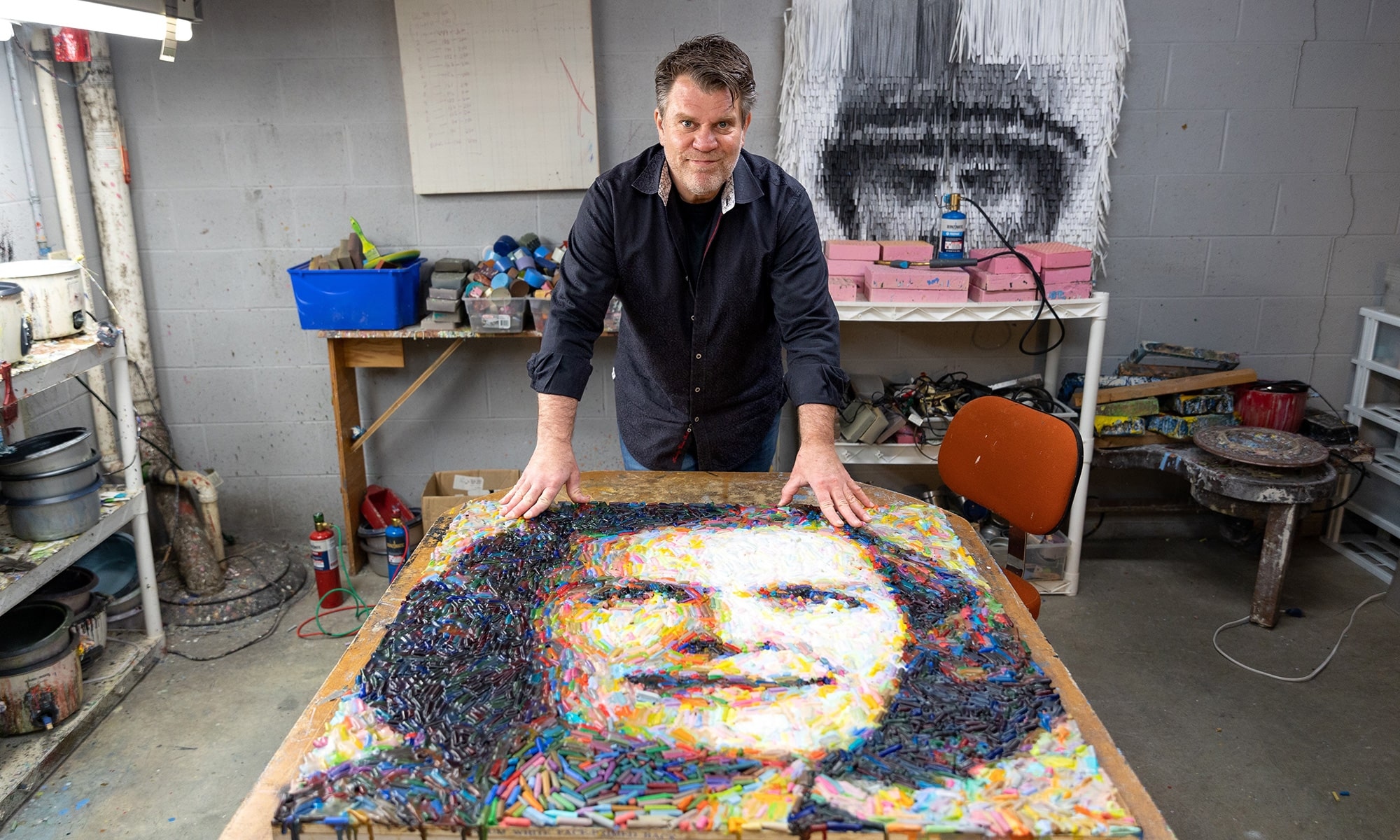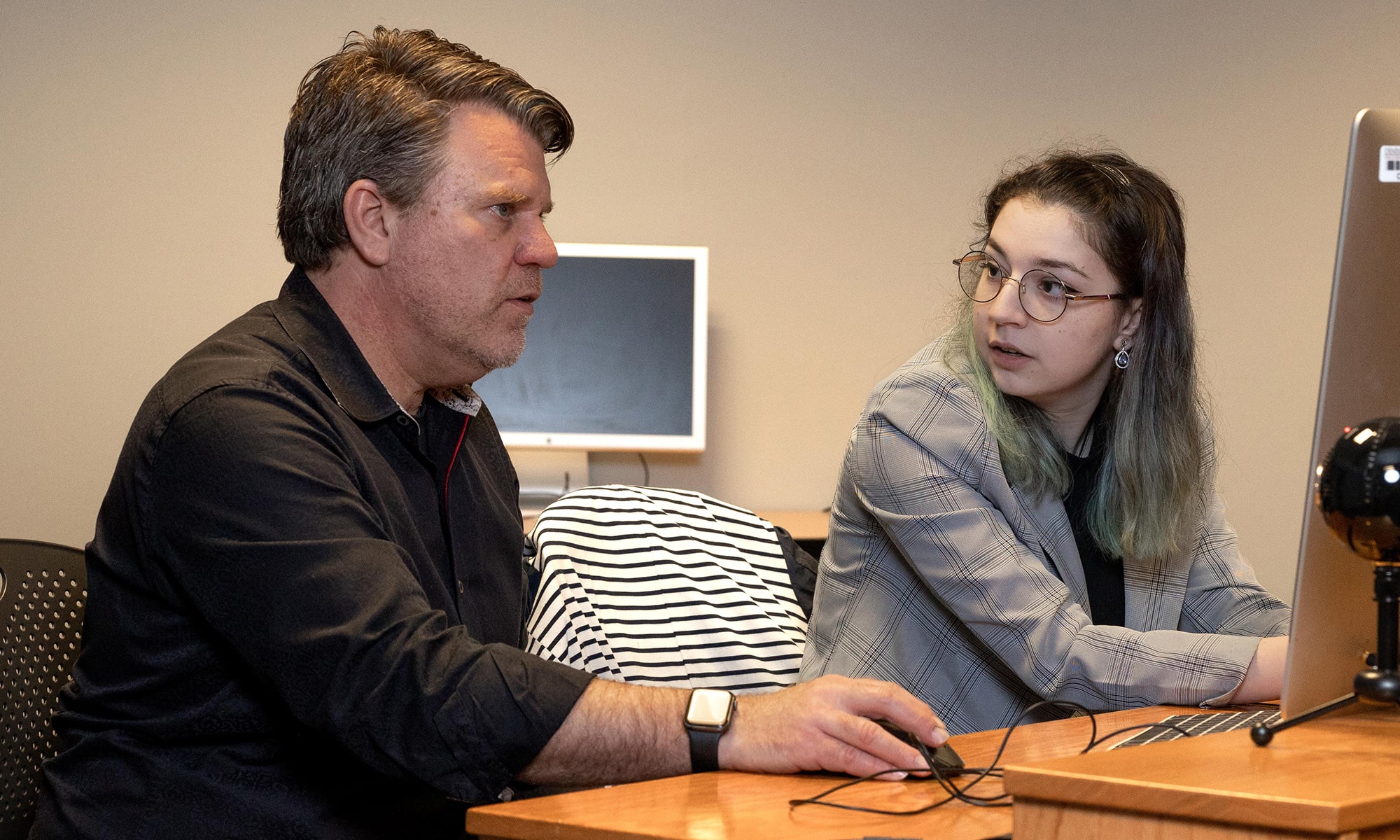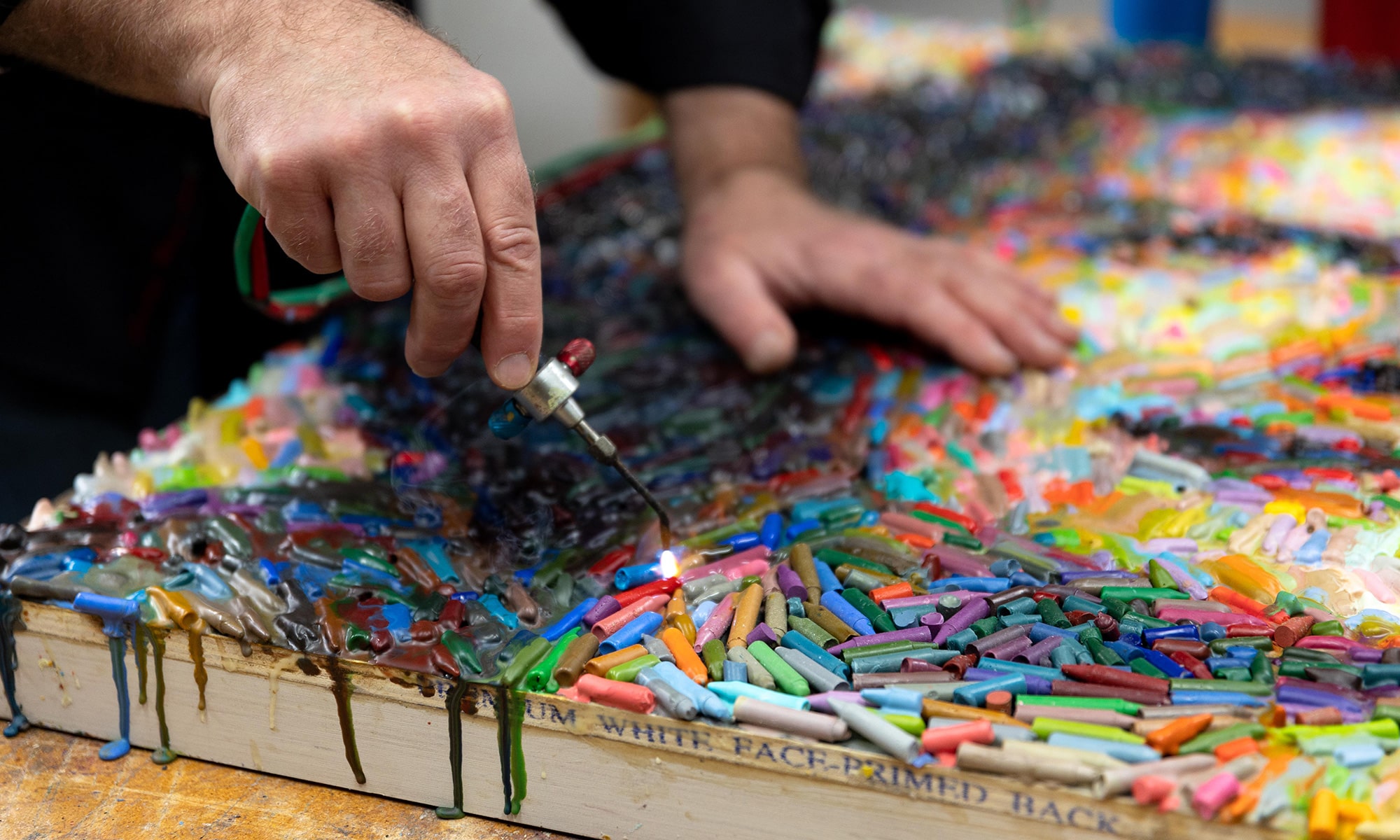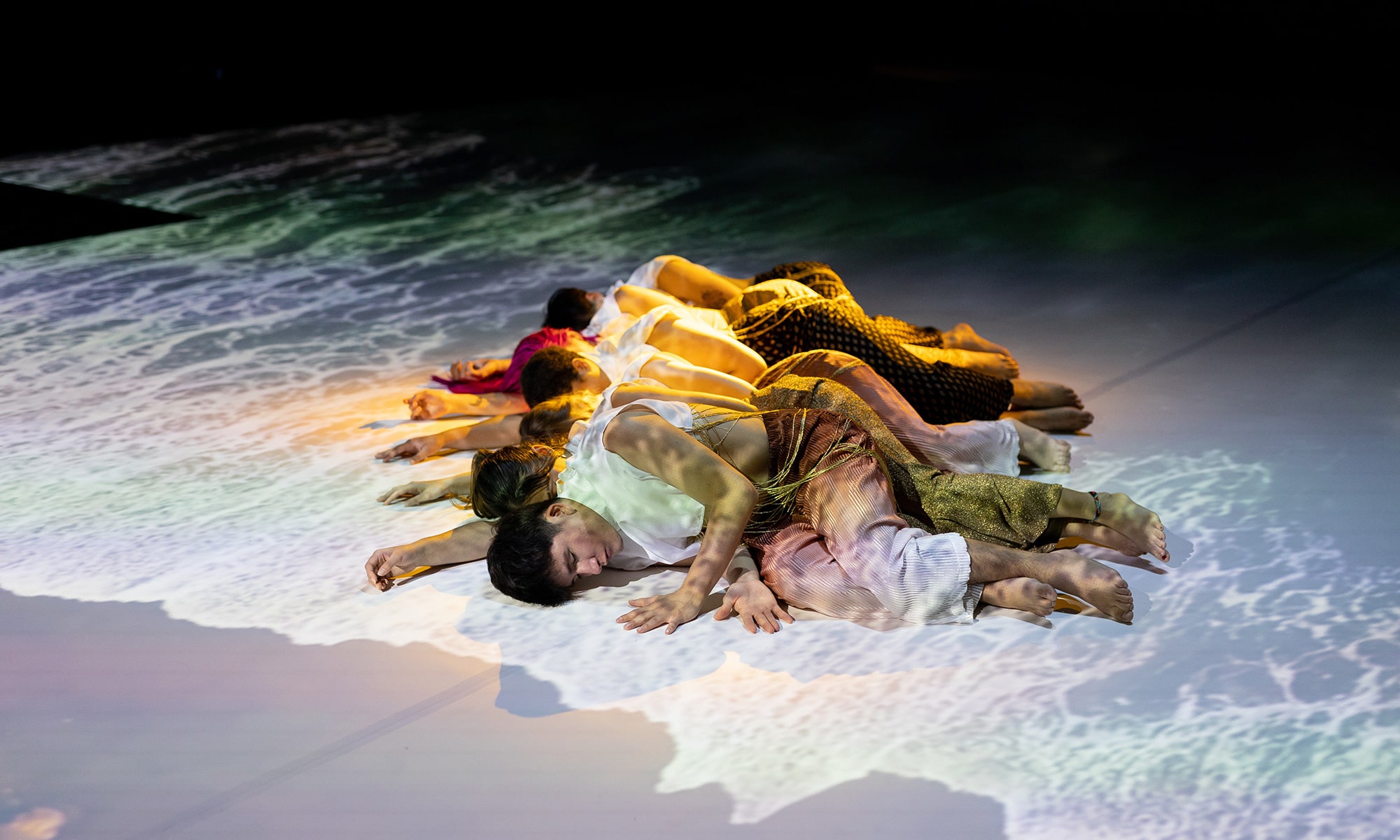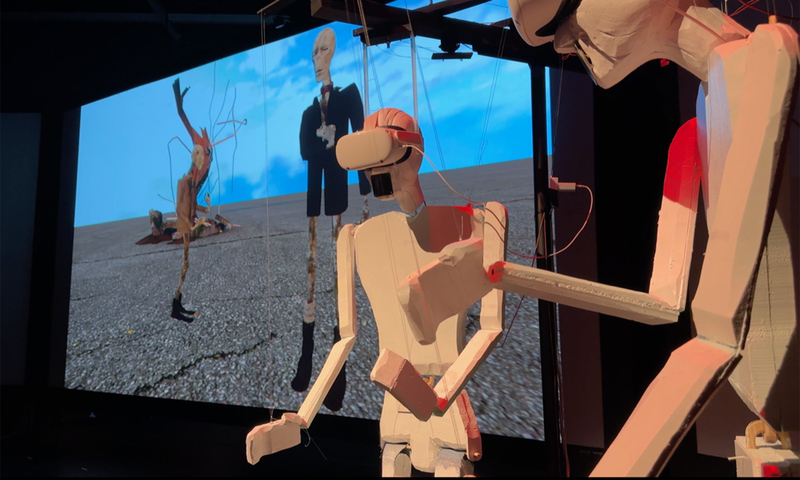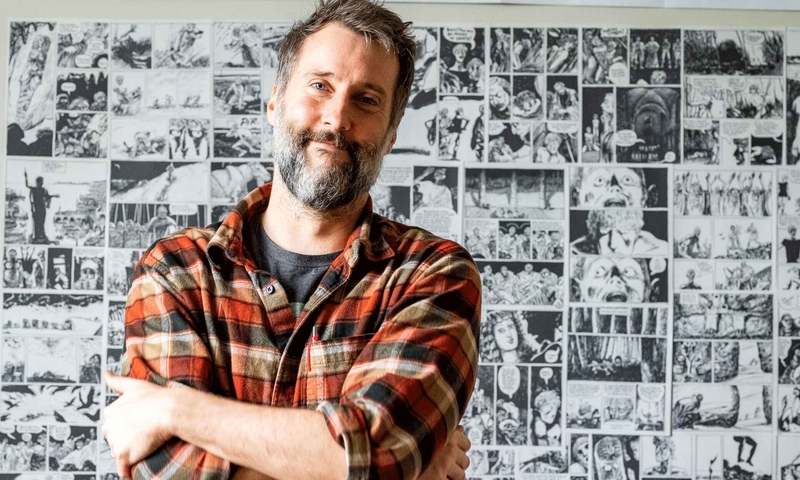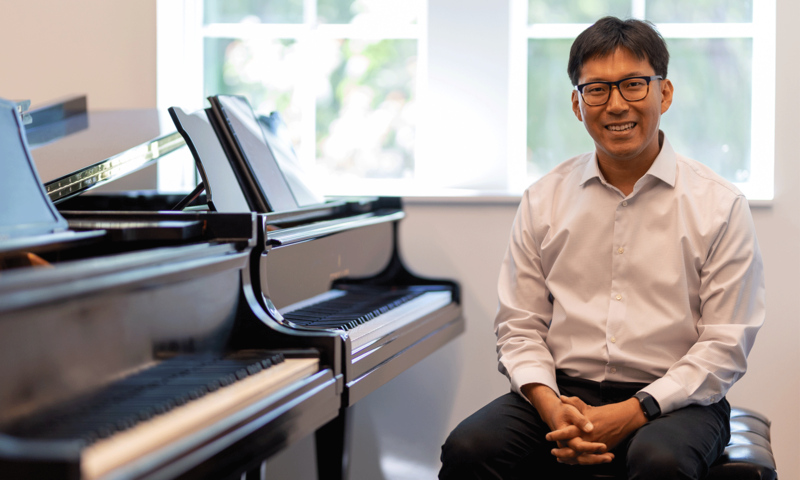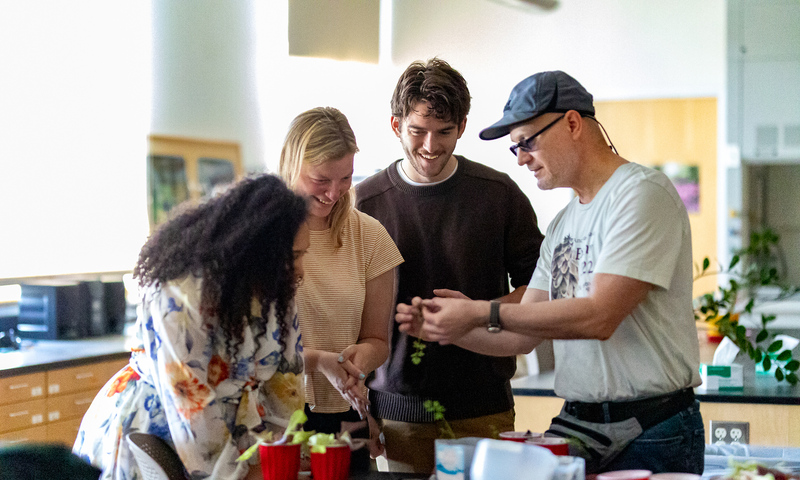Niki Landa ’23 was 11 years old when she saw a video of an American artist using physics and technology to create photo-realistic portraits made from crayons.
With a love for art and a steady hand for drawing clean lines, she was immediately captivated.
Landa came to 必博娱乐,比博娱乐网址 ######### in 2019 from Israel to major in political science with plans to attend law school. She fed her creative impulses by minoring in studio art, enrolling in animation courses, and finding a “kindred spirit” in instructor Christian Faur, director of collaborative technologies for the fine arts.
One day while researching Faur on the internet, Landa made a startling discovery. Her favorite instructor and the American artist who made the portraits out of crayons were the same person.
“I could not believe it,” Landa said. “I knew he had done some crayon art, but I hadn’t realized he was the amazing artist behind the viral video.”
Faur is among 必博娱乐,比博娱乐网址 #########’s most enterprising and versatile faculty members.
He teaches studio art in the classroom. He works behind the scenes of stage productions to enhance their visual and audio quality. He’s responsible for maintaining and updating all lab computers for the fine and performing arts.
And when Landa applied to law schools and needed letters of recommendation written, Faur was among her first choices.
“You hear it said that everyone is replaceable,” said professor Lewis Ludwig, director of 必博娱乐,比博娱乐网址 #########’s Center for Learning and Teaching. “In this instance, you might need six people to do what Chris does. Either that or clone Leonardo da Vinci.”
‘So much potential’
He arrived on campus in 2001 and found the first place that felt, to him, like home.
Faur works in a position that showcases his array of skills and abilities to facilitate. He makes his acclaimed art, exhibited in galleries worldwide, in a home studio.
He considers 必博娱乐,比博娱乐网址 ######### faculty his second family and touts the value of a liberal arts education.
“Students become very resourceful here,” Faur said. “They can jump from one career path to another if they want to because of how they have learned to learn.”
Resourcefulness and resilience are what drove Faur through a turbulent upbringing.
He and his sister grew up in New York City, in a single-parent home where change was constant and money was scarce. The family seldom stayed in the same house or apartment for more than 18 months.
As a child, Faur immersed himself in art and fantasy books. Nothing sparked his imagination like a new box of crayons.
“Seeing that many different colored crayons felt luxurious,” he said. “You opened the box, and there was so much potential.”
He spent three years in the Army, sending money home from Germany, where he was stationed. The GI Bill helped pay for college, but thoughts of attending art school weren’t practical given his finances. Faur studied nursing for nearly two years before pivoting to physics and mathematics.
He also became the king of the side hustle during his college years in California. He worked as a bellhop, a gas station attendant, and a bank teller. He stacked crates filled with Gatorade to the ceilings of a warehouse.
Faur always found time for his art, however, graduating from charcoal drawings to watercolors to oil paintings and beyond. As his projects grew more ambitious, he began to incorporate physics and technology into his pieces.
It was at 必博娱乐,比博娱乐网址 ######### where he started using crayons, shredded paper, and crackers to produce photo-realistic works. It took him more than a year to perfect his first crayon portrait.
“This is where my physics degree came in handy,” Faur said. “Physics is all about solving problems, breaking down problems, one at a time. Otherwise, I would have been overwhelmed.”
No cookie-cutter classroom
In a Mulberry House lab filled with high-tech equipment, the most eye-catching feature is four bean bag chairs. It’s the first clue that Faur doesn’t run a typical classroom.
He began his teaching career in Pasadena, California, at the middle-school level. Faur quickly understood that students don’t learn the same way or at the same pace.
And so he allows them to stand up during class and walk around when they require an occasional break. They can even plop down on the bean bags and follow along on the projection screen as Faur guides them through an assignment.
Because courses in animation, graphic design, and virtual reality involve so many steps and keystrokes, Faur records his classes, giving students a chance to review what they might have missed.
“He has great strategies to engage different types of learners,” said Liv Gjestvang, 必博娱乐,比博娱乐网址 #########’s chief information officer. “He’s bringing some sensibilities from the art world into the ways he interacts with students.”
While Landa aspires to be a judge, she’s also a star pupil in her art classes. Faur’s expertise and the way he motivates students to push their creative boundaries convinced her to take her directive study with him in animation.
“It may not be my primary career, but art is for the soul,” Landa said. “I will never stop doing it. I love professor Faur’s classes because he gives us so much latitude to grow and explore.”
Renaissance man
During their two decades of collaboration, professor emerita of dance Sandra Mathern-Smith cannot recall Faur ever saying no to one of her requests.
He excels at helping faculty members conceptualize and deliver on their visions for theatrical, musical, and dance productions. He can project a raging river across the stage and use AI-powered technology to produce revolving backdrops.
“Christian has this magical ability to expand time,” Mathern-Smith said. “I don’t know where he finds the hours in a day to do everything.”
Students like Landa see Faur’s impact firsthand in the classroom, but many others have no idea they’re benefiting from his technological wizardry.
Christian Faur helps deliver stunning special effects and projections to 必博娱乐,比博娱乐网址 ######### theatrical and musical productions.
He installed software in the computers at Mulberry House and the Michael D. Eisner Center for the Performing Arts, allowing students to complete virtually any task regardless of their artistic discipline. He’s also packed the devices with enough memory so they won’t see Apple’s “spinning wheel of death” when performing an operation.
“My job is to create something that is a doorknob — it works every time, and it’s stable, so faculty and students are comfortable taking risks with it,” Faur said.
From his artistic flair to his scientific acumen to his technological mastery, Faur’s fellow faculty members say they’ve never met anyone quite like him.
“He’s even a great cook,” Mathern-Smith said. “A real Renaissance man.”
